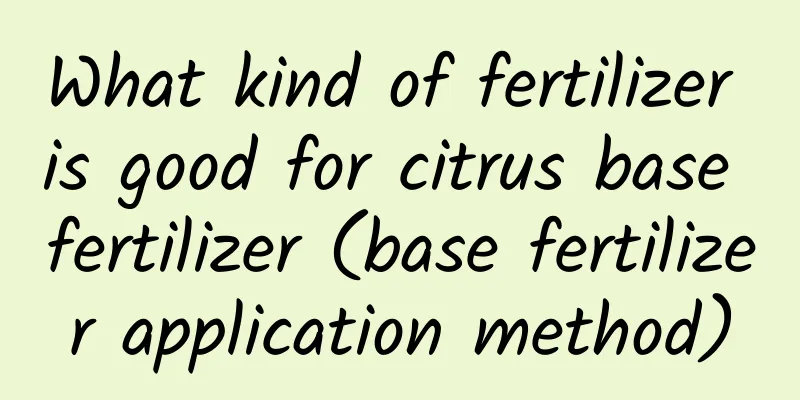Tips on how to control the amount of water when watering flowers (how to control the degree of watering flowers and plants)

|
In addition to providing a suitable growing environment, the main thing about growing flowers is to control your hands that like to water them: The growth of plants depends on a suitable growing environment, sufficient light, and the right amount of water and nutrients. Therefore, after purchasing new potted plants, in addition to keeping up to date with the growth habits of the potted plants, you only need to choose an affordable and easy-to-use flower soil for potting. Then place it in a well-ventilated environment with scattered sunlight, water it in time when the soil in the pot is basically dry, and occasionally add some water-soluble fertilizer in the kettle during the growing period. You don't need to check on them three times a day, nor spray or water them without restraint or abuse fertilizer. If you persist for a period of time, you will find that the potted plants are growing better than before. When growing flowers, you should first take care of the roots. Frequent watering will damage the roots the most:To grow flowers, you must first take care of the roots. Only potted plants with healthy root systems can grow well. After all, potted plants are different from plants grown in natural environments, and their growth is limited to pots. The humidity of the potting soil is directly related to the air permeability and oxygen content of the root system. Watering too frequently will cause the compression ratio of the potting soil to decrease. Once its maximum moisture absorption capacity is exceeded, the soil will become compacted and airtight. Over time, the respiration of the roots of potted plants will be hindered, which can easily cause excessive growth, lodging, and even root rot and yellowing leaves. Different potted plants have different water requirements and need to be treated differentlyFor most potted plants, the basic principle of watering when the soil is dry or watering thoroughly when the soil is dry applies, but shade-loving foliage plants and succulents should be treated differently. Shade-loving foliage plants such as green ivy, pennywort, water lily, monstera, and maidenhair fern do not like exposure to the sun and drought. Instead, their leaves tend to dry out and turn yellow if the light is too strong or the air is dry. They can be watered a little more frequently. Secondly, the leaves of succulent plants are thick and fleshy, very drought-resistant and avoid waterlogging, so watering should be controlled, such as succulent potted plants such as succulents, aloe vera, Christmas cactus, and epiphyllum. These tips reduce waterlogging and root rot in potted plantsChoose a flower pot with good air permeability and bottom holes, and the size of the flower pot should match the crown size and root development of the potted plant. Before potting, use hydrophobic materials such as tiles, nut shells, expanded clay, coal slag, volcanic rocks, etc. to pad the bottom of the flower pot to effectively reduce water accumulation and root rot. Choose a kettle with scale lines, which will give you a more intuitive feeling of the amount of water you are watering each time, and it is also beneficial for controlling excessive watering. If you really can't control it, you can also buy a soil moisture meter specifically for gardening. The data speaks for itself, which is more scientific. |
Recommend
How and when to plant fennel
Fennel planting time Fennel is cultivated in the ...
After she cut the aloe vera in half, it grew into a huge bunch of tiny babies, and the pot couldn't hold them all!
Cut off the head and graft it, at worst you can s...
By the Erhai Lake, in the Moon Palace, she created a paradise with her heart
On the shore of Erhai Lake, Build an exquisite an...
Method of converting soil culture to hydroponics of fortune tree
Time and material selection Spring and autumn are...
Is it auspicious to keep violets at home?
1. Is it auspicious to keep it at home? From the ...
With one cut from the bear's paw, a "bear forest" suddenly appeared!
Raise the bear's paw like this and it will bu...
How to transplant Brazilian wood and how to care for it after transplantation
1. Stop water and remove the basin Before you tra...
Taboos on placing a fortune tree, where is the best place to put it
1. Taboos of placement 1. Do not place the money ...
Effects and functions of castor beans
1. Relieve constipation Castor seeds help gastroi...
Can the sea tiger orchid bloom?
1. It can bloom The sea tiger orchid can bloom, a...
How many days does it take for onion seeds to germinate?
Shallots, also known as green onions, are an indi...
How to water Dendrobium
Key points for watering Dendrobium Dendrobium has...
Common diseases and pests of green treasure tree and their prevention and control methods
1. Diseases and their prevention and treatment 1....
Can purple bamboo plum be hydroponically cultivated? How to cultivate purple bamboo plum hydroponically?
Can purple bamboo plum be hydroponically cultivat...
What is Qianjincai?
What is Qianjincai? Qianjincai is a plant of the ...









